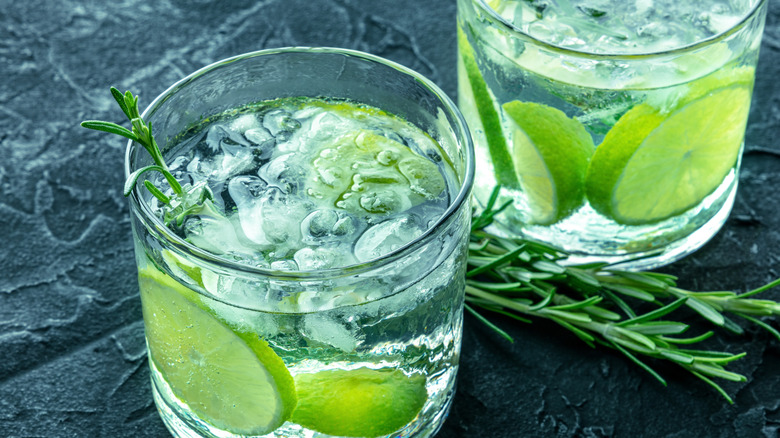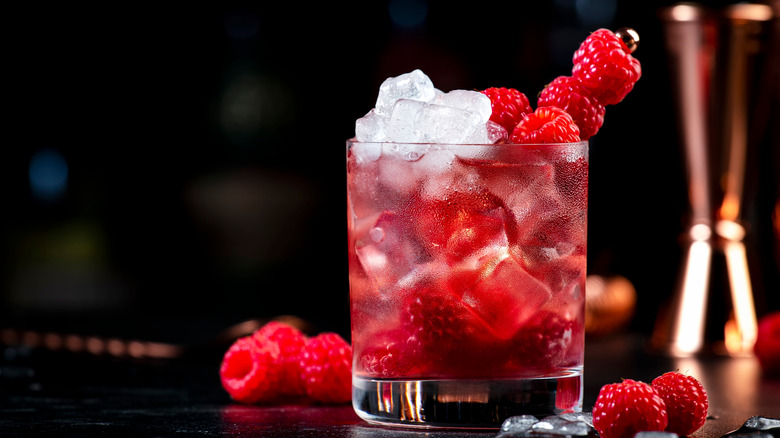Lime Might Not Be The Best Choice For Your Next Gin And Tonic. Here's Why

Plateresca/Shutterstock
There are a few tasting notes that cocktail lovers have come to expect when it comes to a classic gin and tonic recipe. Of course, for gin to be gin, it must contain juniper berries. Typically flavors like coriander, angelica root, citrus, and orris root follow closely behind. The tonic offers the bitterness of quinine to ground the herbaceousness of the gin and an abundance of sweetness to soften the experience. Often a lime is added, as the fruit's acidity brightens up the spirit's many botanicals, allowing them to sing. But what if you've been missing out on an entire world of flavor by not getting more creative with the garnish on your G&T?
Rob Hoffman, beverage director at Lucky Charlie, told Mashed's sister site Chowhound, "There are such a wide variety on both [gin and lime] that a one size fits all approach, while not necessarily wrong, definitely leaves a lot on the table in terms of being able to enhance the various flavors in a G&T." The outlet also consulted the vice president of beverage and hospitality culture at Carver Road Hospitality, Francesco Lafranconi. "Lime is the most common, but it's not always the best way to drink a G&T," according to Lafranconi.
While we mentioned a few of the star players in the gin-making game, the beverage can contain a myriad of other botanicals that give the drink specific qualities, like black pepper's spiciness or lavender's strong floral flavor. Try choosing a garnish that either complements the flavor you're trying to amplify or contrasts with it in a way that adds depth and balance.
Know your tongue

5PH/Shutterstock
If you're an experienced sipper, you know that cocktail garnishes are for more than just looks. Ideally, they bring aromatics or flavor in a way that adds to the overall experience. If your gin of choice is on the spicier side, you might consider a hint of pickled ginger, or a sprinkle of pink pepper. Folks who dig the savoy elements in gin could opt for a skewer of olives to munch on between sips or a floating bay leaf to deliver earthy aromatics. Meanwhile, floral gins do well with a spring of rosemary, lavender, or mint, and a wedge of lemon the bring things back up.
If your philosophy on gin is "the fruiter the better," you might up the ante with a few raspberries, or — the best fruit to add flavor to your gin — elderberries. Elderberry syrup will add sweetness, a gorgeous lilac color, and a lovely fruity element. Alternatively, you can infuse an entire bottle of gin with elderberry by steeping the washed berries in a bottle of gin for for a month or more. (Remember to leave it in a cool, dark place and strain the berries after one full moon cycle.) If you're looking for a quick fix to your elderberry hankering, go ahead and grab a bottle of St. Germain. This popular elderflower liqueur is killer in an updated French 75 recipe combined with lemon, gin, sugar, and champagne.
Static Media owns and operates Mashed and Chowhound.



